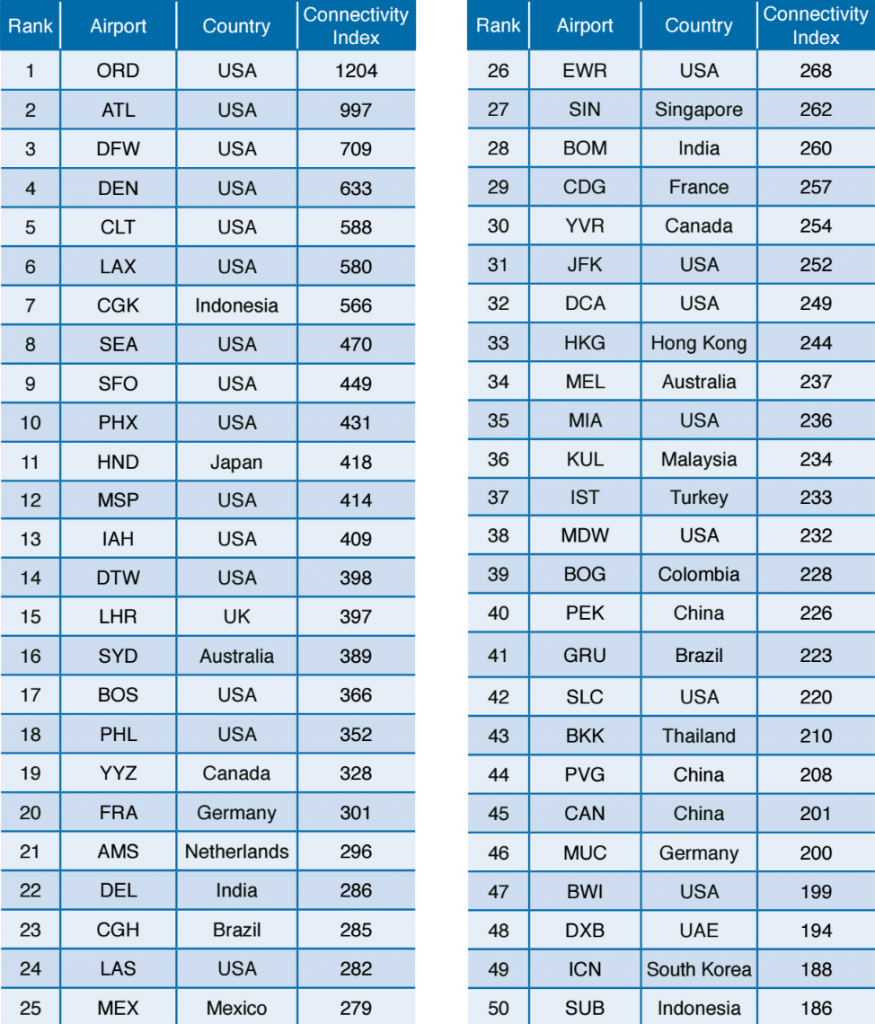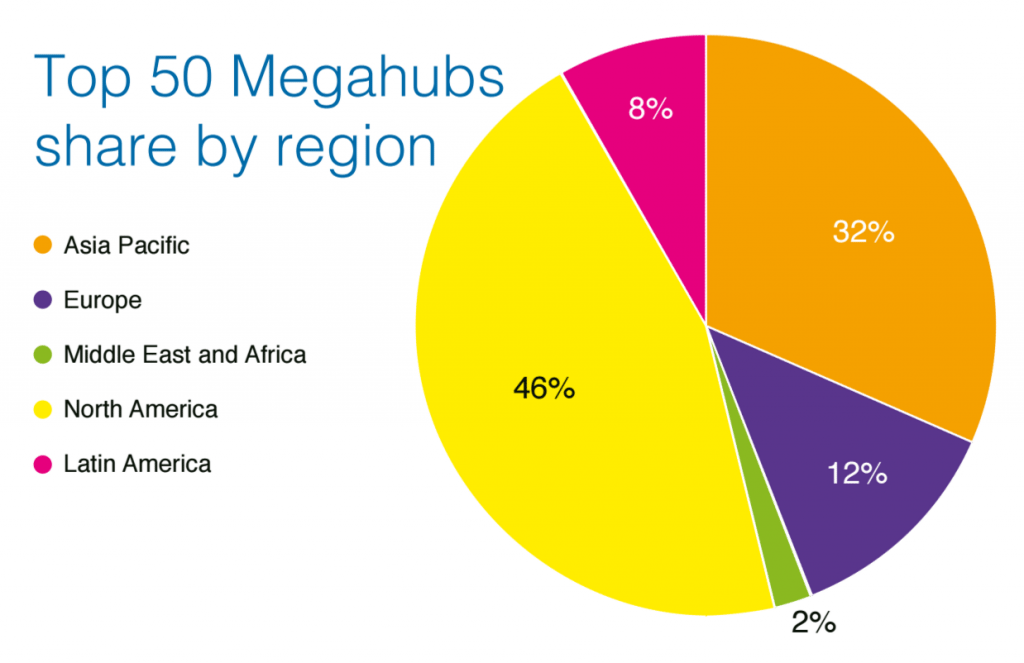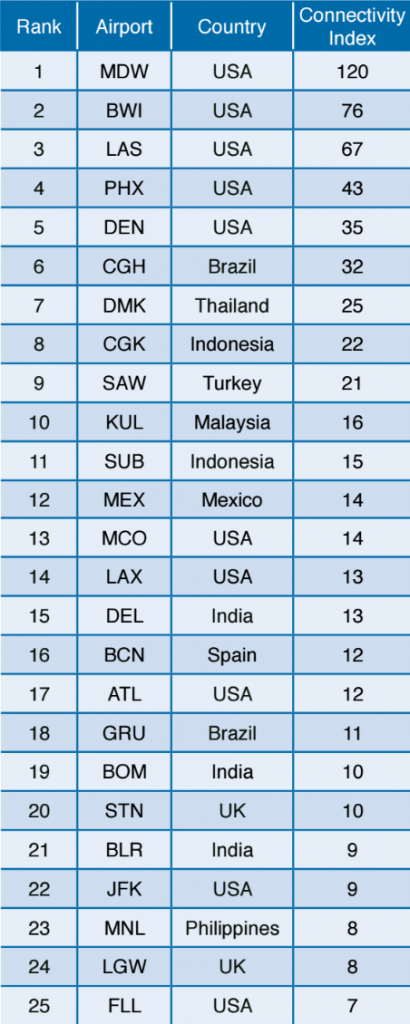Skift Take
High demand for domestic travel is what's keeping several U.S. airports at the top of the ranking, even if many passengers have to wait several hours in between flights to reach their destinations.
While the U.S. remains a stronghold for many of the world’s largest airport “megahubs” — or those with the most available connections — the amount of time travelers wait for connections at airports across the country is often lengthy and inconvenient.
Some 22 of the world’s top 50 megahubs (44 percent) are in the U.S. and nine are in the top 10. It’s no coincidence the U.S. is dominating the megahub charts given airline consolidation during the past few years, said OAG, an air travel intelligence company, which ranked the world’s megahubs for 2016.
OAG’s ranking is based on the total number of possible connections between inbound and outbound flights within a six-hour window at world’s 100 largest airports (based on departing scheduled seat capacity from September 2015 to September 2016). This is indicated in a connectivity index score in the charts below.
Chicago O’Hare International Airport (ORD) is the largest megahub in the world, according to OAG. On a single day in August, there were more than 270,000 possible connections between flights arriving at ORD and flights departing within a six-hour window.
American and United Airlines, two of the world’s largest carriers, both have hubs at O’Hare and have both undergone mergers. “Chicago invested in several operational efficiencies including new runways, while Seattle and San Francisco both have made a push for more connections to Asia,” said John Grant, senior analyst at OAG.
U.S. airline consolidation is more widespread than other regions such as Europe or Asia, said Grant. “We are beginning to see some ‘pan-continent’ developments such as LATAM, Ryanair, EasyJet, Wizzair, and Air Asia but that high level of concentration of capacity in a few airlines is an almost unique U.S. market condition,” he said.
The U.S., more than other regions, is reliant on airlines and airports for long-distance travel. “Much more so in Europe is of course competing travel modes and especially high speed train services such as the TGV that have been very successful at attracting traffic from air services so the need for large domestic hubs is much less than in the US,” said Grant.
Some of these airports are the world’s busiest by passenger traffic, but the ranking represents the amount and quality of connections that each airport offers.
International Connections at U.S. Airports Are Growing
Connectivity indexes were higher for most of the top 50 megahubs last year as OAG’s maximum connection window was eight hours instead of six.
Still, many connections are longer than one or two hours and detract from the time travelers have in their destinations to spend and explore. “One of the factors that is affecting the U.S. regional connectivity is the changing nature of regional services where increased duty hour requirements and attractive salary offerings from overseas carriers are reducing the pilot pool for regional carriers and has led to some reductions in frequencies operated to secondary points,” said Grant.
International connections in the U.S., however, are picking up. “What we are perhaps seeing is the growing impact of Asian connectivity in the U.S. market and the subsequent multiplier impact on air services,” said Grant. “Expansion into China and Australia has been a noticeable development in the last year from both U.S. airlines and Chinese carriers which builds that connectivity and hub scoring. Particularly so on the west coast U.S. hubs where all three U.S. major legacy carriers have benefited.”
Airports are in the business to get people to and from their destinations as quickly as possible. But many hubs likely don’t balk at long connections which mean travelers have more time to spend their money throughout terminals, especially as airports renovate and expand to add more restaurants and shopping.
Chart 1: Chicago’s O’Hare, Atlanta’s Hartsfield-Jackson, Dallas/Forth Worth and Denver International Airports top the ranking for the world’s megahubs. Low-cost carrier connections are included as are interline connections, or itineraries with connections on multiple carriers.

Chart 2: North America accounts for the largest percentage of the world’s megahubs (46 percent), followed by Asia-Pacific (32 percent) and Europe (12 percent).

Chart 3: Five of the top 10 low-cost airline megahubs are U.S. airports. Chicago Midway Airport (MDW) is ranked first for the second year in a row, with Southwest Airlines operating nearly 90 percent of the flights at Midway in August 2016.
Sao Paulo’s Congonhas Airport (CGH), Bangkok’s Don Mueang Airport (DMK) and Istanbul’s Sabiha Gokcen Airport (SAW) are the some of the largest megahubs outside the U.S.

Source: OAG
The Daily Newsletter
Our daily coverage of the global travel industry. Written by editors and analysts from across Skift’s brands.
Have a confidential tip for Skift? Get in touch
Photo credit: U.S. airports accounted for nearly half of the world's top 50 megahub airports this year. Pictured are passengers waiting for their flights at Denver International Airport. David Rutledge / Flickr